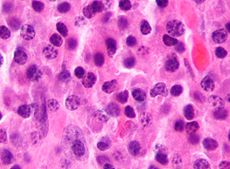CANCER DIGEST – July 27, 2015 – In the first study to document updated treatment trends, researchers found that from 2010 to 2013, 40 percent of men with low-risk prostate cancer opted for active surveillance, in which the disease is monitored closely with blood tests, imaging studies and biopsies. Treatment is deferred unless these tests show evidence of progression.
That is much higher than the 10 percent of low-risk prostate cancer patients who pursued active surveillance in the years from 1990 through 2009. Rates for radiation therapy for this low-risk group have also slipped since 1995. The analysis was based on an ongoing study called, Cancer of the Prostate Strategic Urologic Research Endeavor or CaPSURE Registry. The study published in the July 7, 2015 JAMA.





